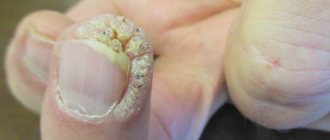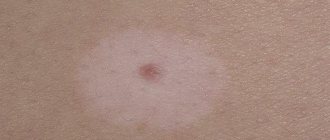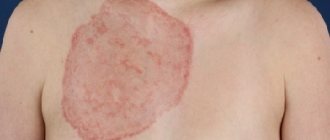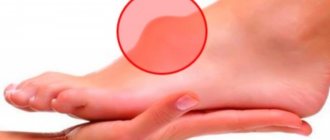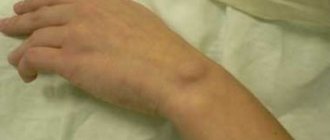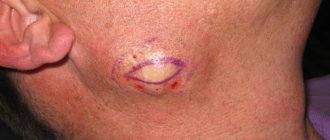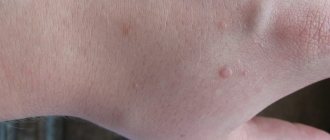Although both types of wen are benign neoplasms, unlike atheroma, lipoma can sometimes undergo malignancy, degenerating into liposarcoma. Atheroma is formed as a result of blockage of the sebaceous glands, and a lipoma forms in the subcutaneous fatty tissue, often growing in depth - between the muscles and blood vessels, down to the bones and joints. Lipomas are most often painless, and with large tumors, discomfort may be caused by the pressure of the tumor on neighboring tissues. Atheroma, in the case of inflammation and suppuration, can be painful when pressed. There can be no talk of any independent removal of such tumors. Diagnosis and treatment of any neoplasms should be carried out by qualified specialists in a specialized clinic.
Small lipomas can resolve on their own under the influence of heat, for example in a sauna, but they can also grow rapidly, creating not only aesthetic problems. Indications for lipoma removal are:
- severe pain of the tumor;
- rapid tumor growth;
- threat to vital organs;
- if the tumor becomes a pronounced cosmetic defect;
- if the tumor makes movement difficult.
Small lipomas can be removed without surgery by injecting Diprospan into the tumor.
There are many more contraindications to this method than to surgery. Most often, small lipomas have a capsule that separates the tumor tissue from neighboring healthy tissue, so its removal is not difficult. However, large neoplasms located on the head, neck, back near the spine, affecting joints, may have a complex branching structure that includes nerves and blood vessels. [box#1]In such cases, removal of the tumor can take more than one hour and requires high professionalism. Be that as it may, the smaller the tumor, the shorter the intervention, which means fewer side effects, less risk of complications, and less cosmetic defect after surgery.
Causes of lipoma formation
Currently, researchers have not been able to come to a clear conclusion about the reason why lipomas form. Among the most likely causes of the appearance of wen are malfunctions of the thyroid gland, poor-quality nutrition, which provokes the accumulation of toxins in adipose tissue, genetic predisposition, hormonal imbalances, problems in the functioning of the liver and gall bladder.
As a rule, wen do not degenerate into malignant formations. However, the problem is that although lipomas do not grow into neighboring tissues, they compress them when they grow in size. This provokes metabolic disorders and can cause pain. In addition, malignant tumors, such as liposarcoma, are often “masked” as lipomas. Therefore, in some cases, it is better to remove lipomas.
Thus, the reason for contacting a doctor should be an increase in the size of the formation or its shape, as well as the appearance of any physical discomfort associated with the lipoma. Causes for alarm are redness of the skin over the formation, itching or peeling.
According to doctors, it is necessary to remove fatty tissues located next to a cluster of blood vessels or nerve cells. In addition, formations located in areas of the skin that are exposed to frequent external influences should be cut out.
When you shouldn’t delay seeing a doctor
There are a number of symptoms to highlight:
- When there is pain, inflammation and changes in the color of the skin above it, as well as the size or shape of the lipoma. By a noticeable increase in size, experts mean spasmodic and rapid growth of the tumor over 1-2 months.
- Lipoma is located on visible parts of the body, on the face, and causes discomfort.
- The lipoma is located on the back, neck or other parts of the body where there is constant friction with clothing or shoes, which can lead to inflammation.
- And you certainly cannot hesitate if it begins to fester, fluid accumulates or is released.
- Lipomas, located deep inside the body and invisible to the eye, manifest themselves as dysfunction of a particular organ and corresponding symptoms of its disease.
Additional diagnostic methods using medical equipment will allow you to make an accurate diagnosis. At the first consultation, it should be noted, the doctor usually makes a diagnosis without difficulty, just by visual examination and palpation.
Lipoma removal methods
Today, there are several methods for removing wen. The decision on which method to use for surgical intervention is made in each specific case by the doctor after diagnosing the formation. It includes visual examination, palpation, ultrasound, CT or MRI, and biopsy. Tumors are removed by conventional surgical excision, endoscopy, radioknife, or laser removal. Laser lipoma removal is considered one of the most effective and innovative methods.
To delete or not to delete?
The lipoma itself is not dangerous. But due to the complications described, the tendency to grow, unpleasant sensations, and psychological discomfort, it is better to get rid of them. And this should be done by specialists, especially if the tumor is of significant size.
You need to understand that the very presence of a wen can lead to permanent injury. And this, in turn, is always fraught with negative consequences in the form of malignant neoplasms around the wen. The doctor, in turn, will always, after the necessary research, select the correct method that is suitable for a particular case.
Pros and cons of laser removal
Laser lipoma removal is a method that is in high demand, despite the rather high cost of the procedure. The reason for this is that laser removal has an impressive list of undeniable advantages compared to other methods of combating fatty tissue. We list only the main ones.
- Thanks to the ability to adjust the equipment as accurately as possible, unnecessary damage to the tissues located next to the lipoma is eliminated.
- The laser itself coagulates the blood vessels, so the operation is virtually bloodless.
- The possibility of developing postoperative complications is practically excluded, since the laser beam has a bactericidal effect, disinfecting the surgical field.
- The non-contact nature of the method eliminates the possibility of wound infection by pathogenic organisms during surgery.
- After the operation there are no unaesthetic scars left.
- During surgery, the tumor is not completely destroyed, as a result of which histological analysis can be performed.
- The number of relapses with laser removal is negligible, since this method allows you to remove the lipoma along with the capsule.
- After the intervention, the patient recovers completely within one to two weeks.
However, like any surgical intervention, laser lipoma removal also has some negative characteristics. If the tumor is very large, the laser beam may accidentally affect nearby vessels and nerves. If the tumor is very tiny, then the laser simply destroys it, leaving no material for histological analysis.
Laser removal is not used if the wen is located very deep in the tissues. In this case, only traditional surgical excision will be effective.
Finally, the financial aspect is of considerable importance. Laser removal is an extremely expensive operation, so not everyone can afford it.
Warning factors
Some factors should alert the specialist. Large size, deep location, intensive growth, formation of adhesions with surrounding tissues, pain.
In this case, additional examinations are carried out to check the malignancy of the formation - liposarcoma. Ultrasound, X-ray examinations or computed tomography are prescribed. The doctor will send you for blood tests (general, immunodeficiency virus, hepatitis, Wasserman reaction). By agreement with the patient, a clear photograph of the lipoma is shared. Clinics have their own database where they place similar photographs of the diseased organ.
Having made an accurate diagnosis, the specialist selects a treatment method. It should be noted that there is only one treatment option - complete removal of lipomas.
How is laser lipoma removal performed?
Laser excision of wen is usually performed by a general surgeon. The procedure can also be performed by an oncologist or plastic surgeon. Before the procedure, the patient must undergo all necessary tests and undergo an ultrasound. In some cases, a biopsy of the formation is performed to determine its structure. If the lipoma is located on the scalp, the required area is shaved.
Laser removal of fatty tissues is performed under local anesthesia. Lidocaine injections are used as an anesthetic. The lipoma removal procedure itself lasts from half an hour to forty minutes, depending on where exactly the tumor is located and what size it is.
First, the doctor uses a laser beam to cut the skin over the wen and spread the edges of the incision to allow wider access. Through this incision, the wen capsule is captured with a clamp. The surgeon pulls it up and uses a laser to remove the lipoma from the surrounding tissue, and then finally cleans out the location of the lipoma. If the neoplasm is small, the wound is not sutured - it is simply covered with a sterile bandage. If the wen was large, a cosmetic suture is applied to the wound. One of the advantages of laser surgery is that the beam of the device promotes tissue regeneration, as a result of which a postoperative scar does not form.
In most cases, the patient can return to normal life almost immediately after surgery. In particularly difficult cases, several days of bed rest may be necessary.
After removal of the wen, the tumor tissue is recommended to be sent for histological examination to definitively exclude the presence of malignant cells.
Preparatory activities
The procedure for removing the wen is performed under local anesthesia, but patients need to prepare for the operation.
A week before the start of treatment, the doctor prescribes a comprehensive examination, which includes the following procedures:
- submitting urine and blood from a finger prick for general clinical tests;
- donating blood from a vein for the presence or absence of HIV, syphilis, hepatitis;
- consultation with a cardiologist, conducting an electrocardiogram;
- ultrasound examination of the location of the pathology;
- X-ray when a large tumor is located near the bones.
If a person has chronic diseases, he is sent to a narrowly observing specialist. Before surgery, the anesthesiologist checks for the presence of allergic reactions to medications or conducts a test, based on the result of which an anesthetic medication is selected.
Preparing to remove the wen:
- do not eat eight hours before surgery when using general anesthesia;
- do not eat for two hours if the removal is performed under local anesthesia;
- stop smoking several hours before removal;
- Do not drink alcoholic beverages for several days before removal.
It is advisable to come to the hospital with a person who will wait in the corridor while the operation lasts, and after it will help you get home.
We recommend reading Liver tumors: symptoms, types and treatment
How to behave after laser lipoma removal
The question of how to behave after laser removal of a wen worries many patients. Let us hasten to reassure them - getting rid of lipoma with a laser is considered the most gentle method. No complex additional manipulations are required after the procedure. In most cases, the patient returns home immediately after removal of the wen.
If there is pain or discomfort at the extraction site, your doctor may prescribe pain medications. During the first few days after surgery, a slight increase in temperature is possible, which does not require taking any additional medications.
Diagnostics
Diagnosis of wen on the abdomen is carried out through differentiation with other diseases that have similar clinical manifestations, as well as through research in the laboratory. To eliminate the risk of tumor degeneration into malignant diseases, a puncture of the tumor is required, followed by a histological examination of the contents.
Contraindications for laser fat removal
Best materials of the month
- Coronaviruses: COVID-19
- Antibiotics for the prevention and treatment of COVID-19: how effective are they?
- The most common "office" diseases
- Does vodka kill coronavirus?
- How to stay alive on our roads?
There are relatively few contraindications for laser lipoma removal. First of all, such manipulations are not performed on people who have been diagnosed with diabetes. Laser removal is not recommended for pregnant and lactating women. It is also worth rescheduling the procedure if the patient has recently suffered from a cold or infectious disease.
Complications and consequences of the procedure
As a rule, laser removal of wen does not cause complications. Only in very rare cases, at the site of removal of large formations, a cavity may appear in which blood and serous fluid accumulate. To solve this problem, drainage is used.
To avoid negative consequences, the wound should not be wetted for a week. For a month you should avoid visiting the sauna and swimming pool, as well as sunbathing.
More fresh and relevant information about health on our Telegram channel. Subscribe: https://t.me/foodandhealthru
We will be grateful if you use the buttons:
